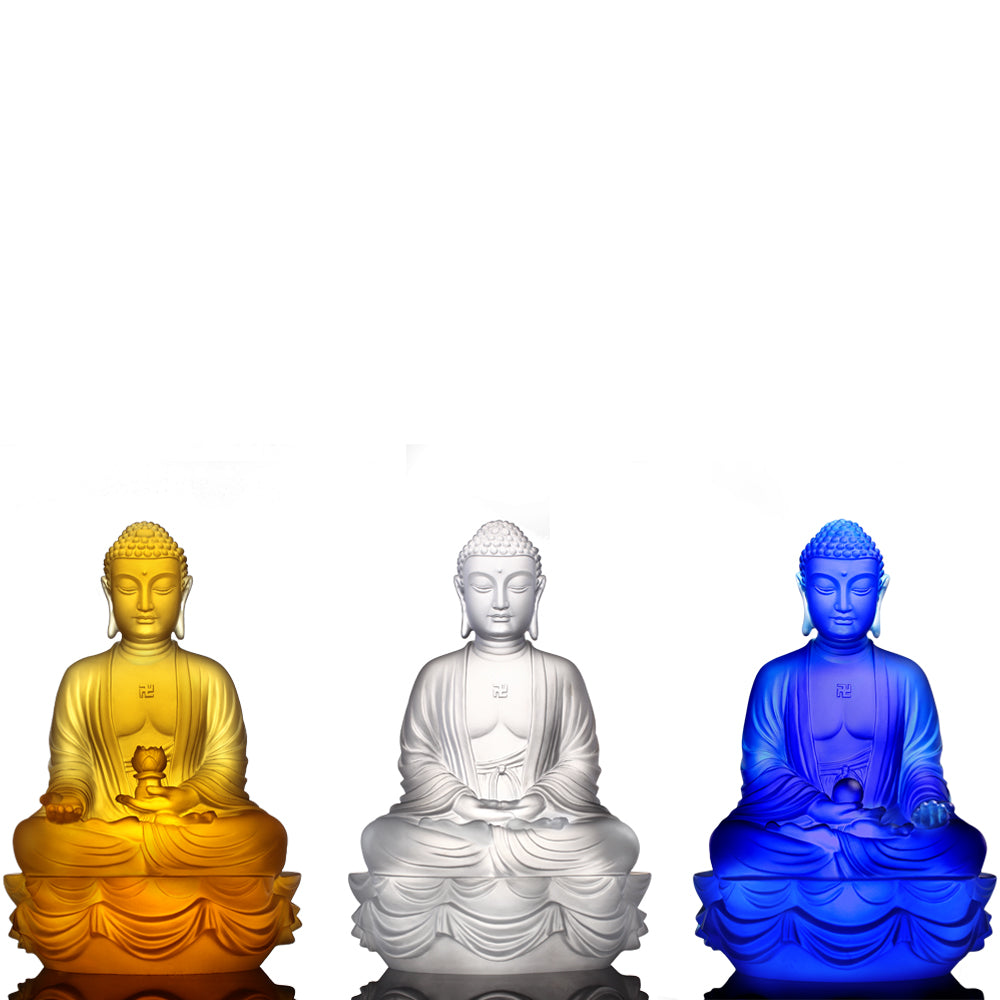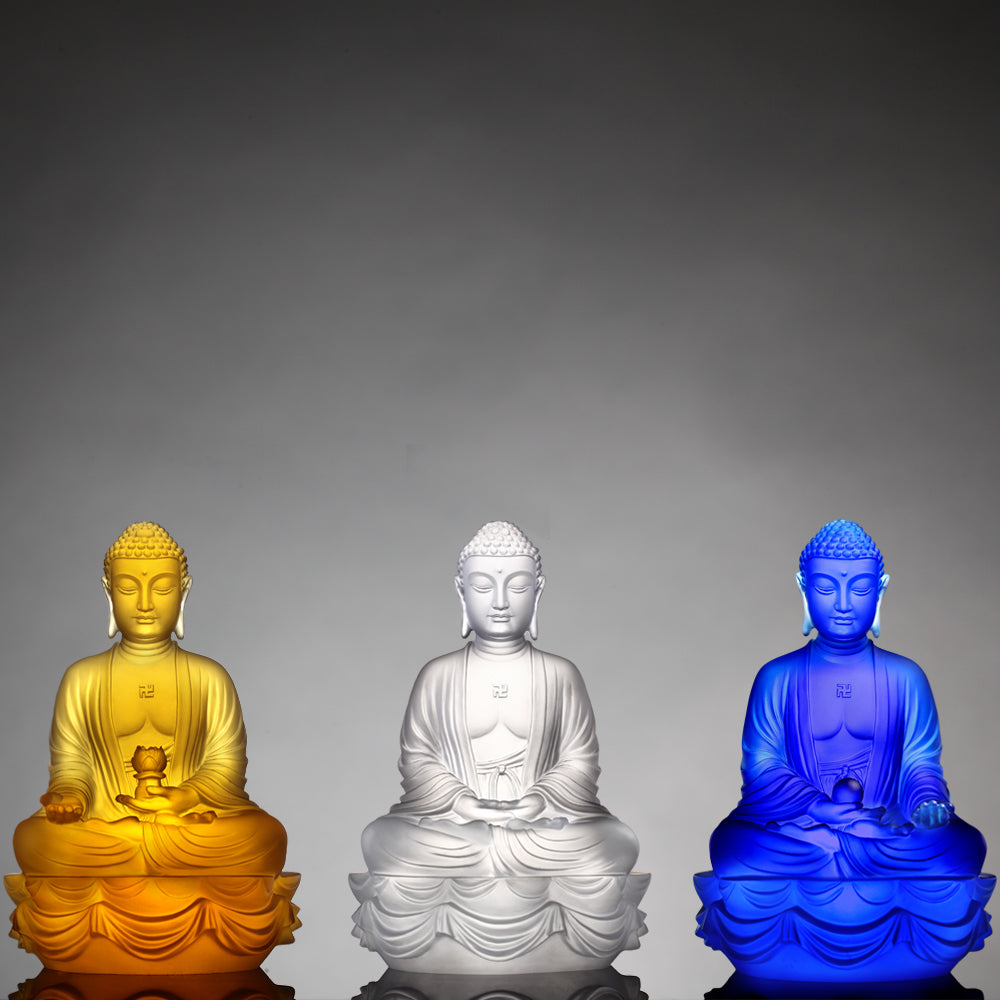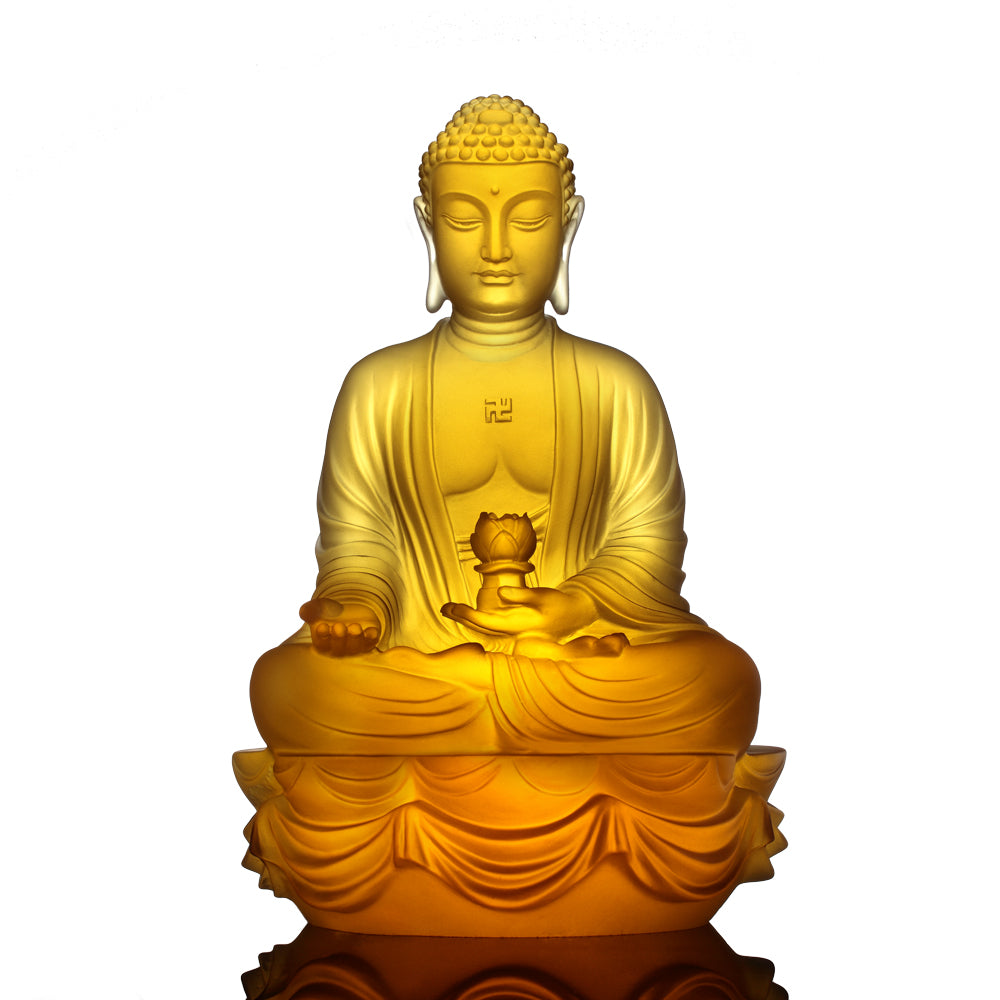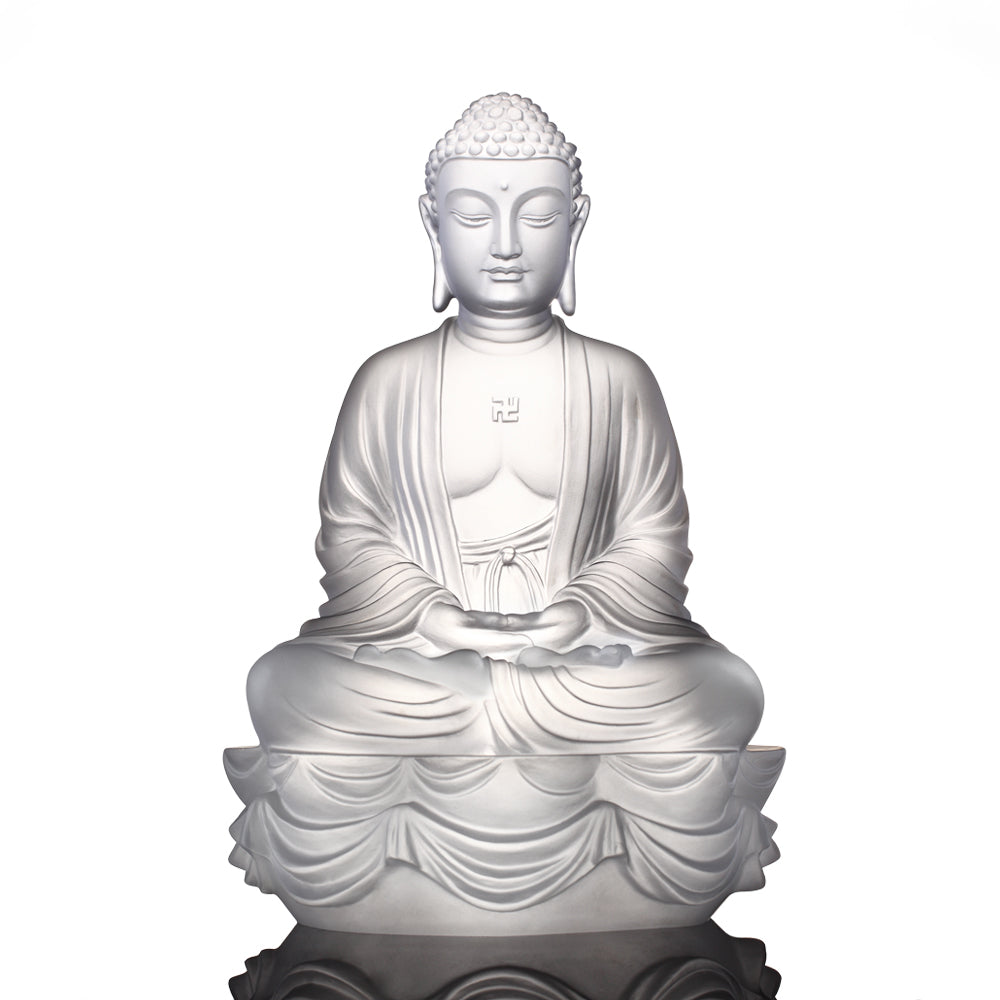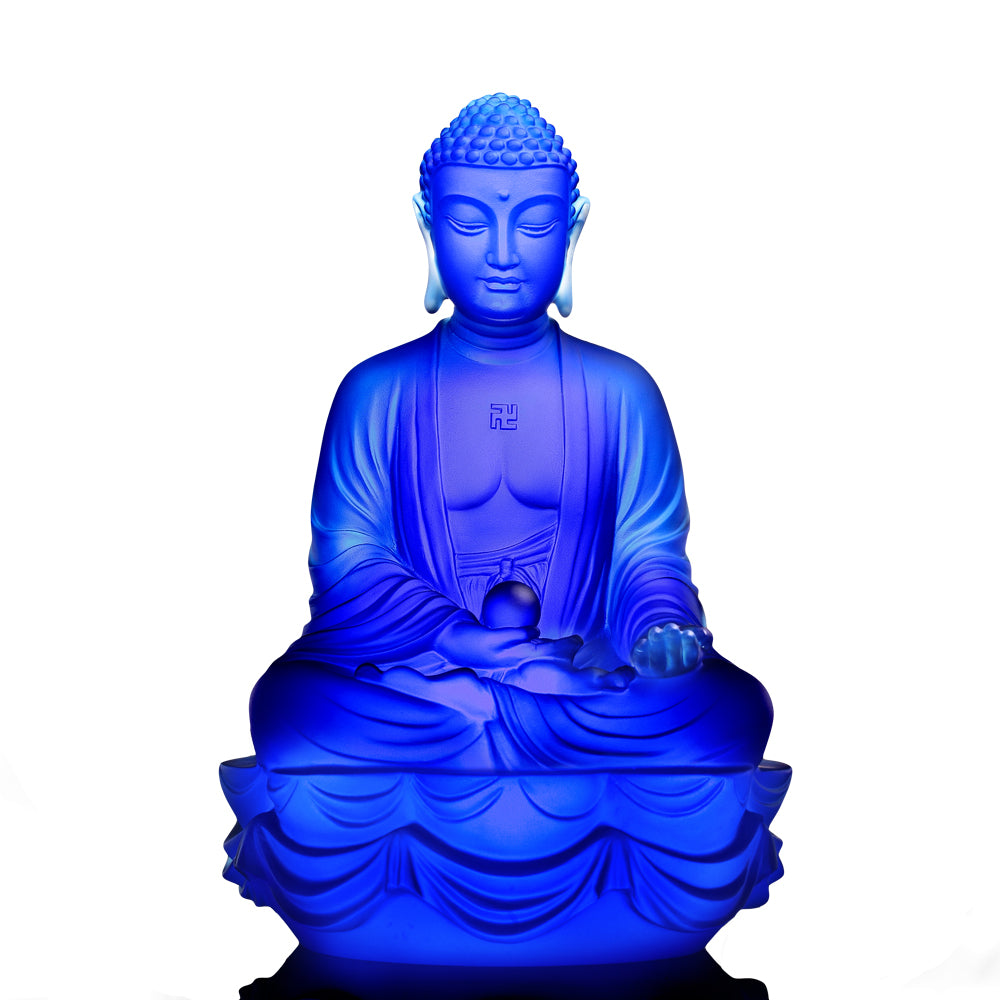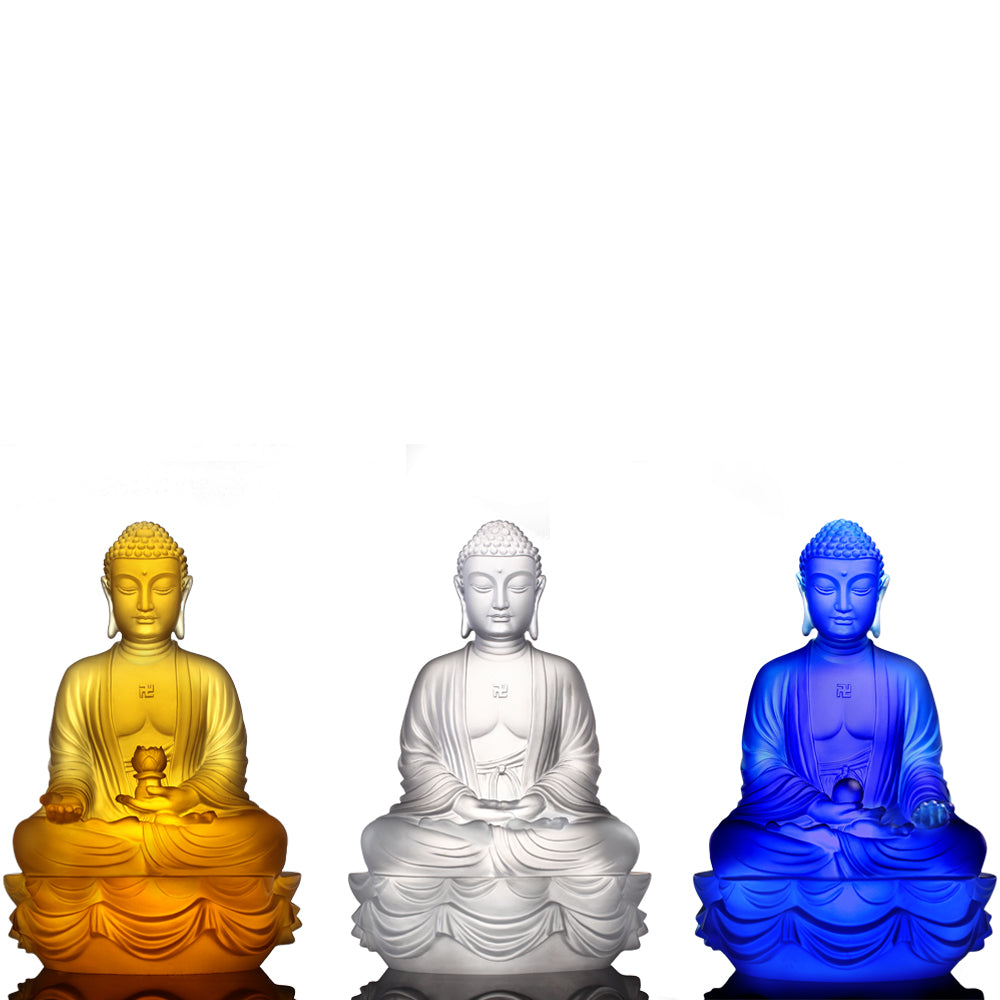
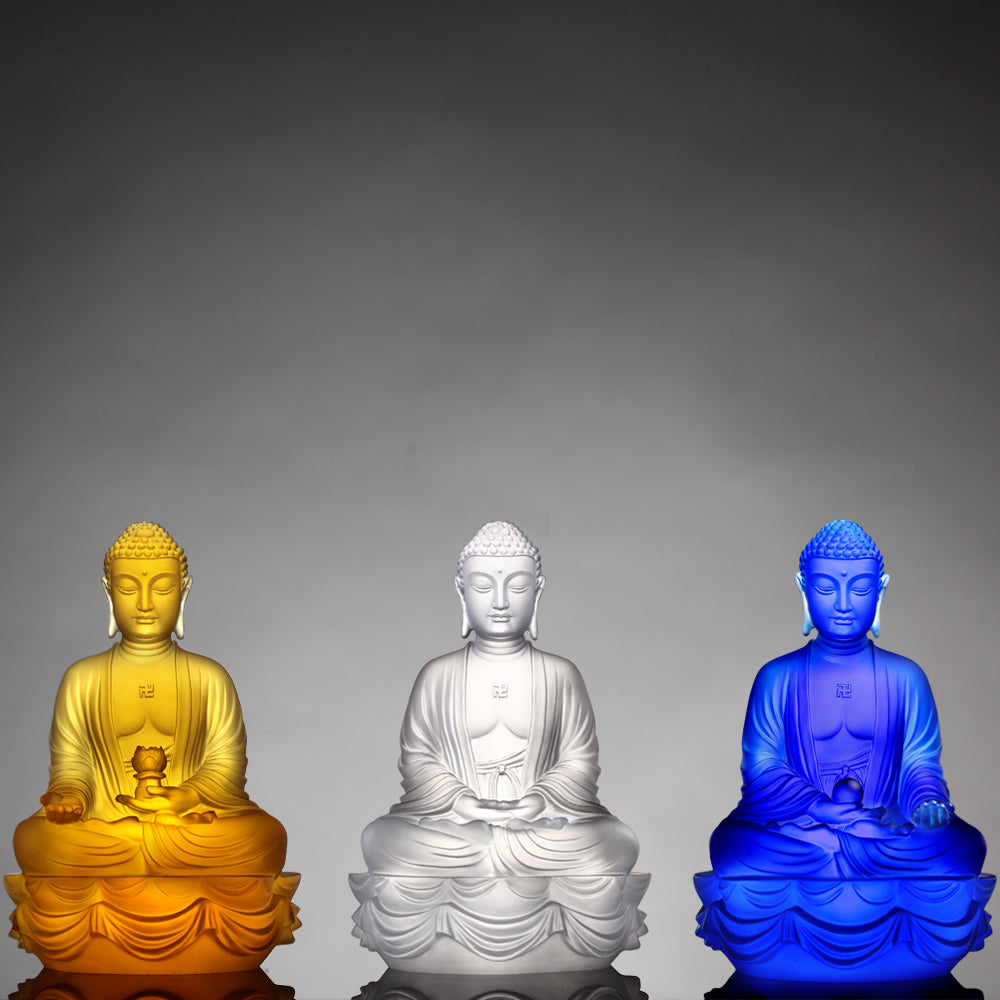
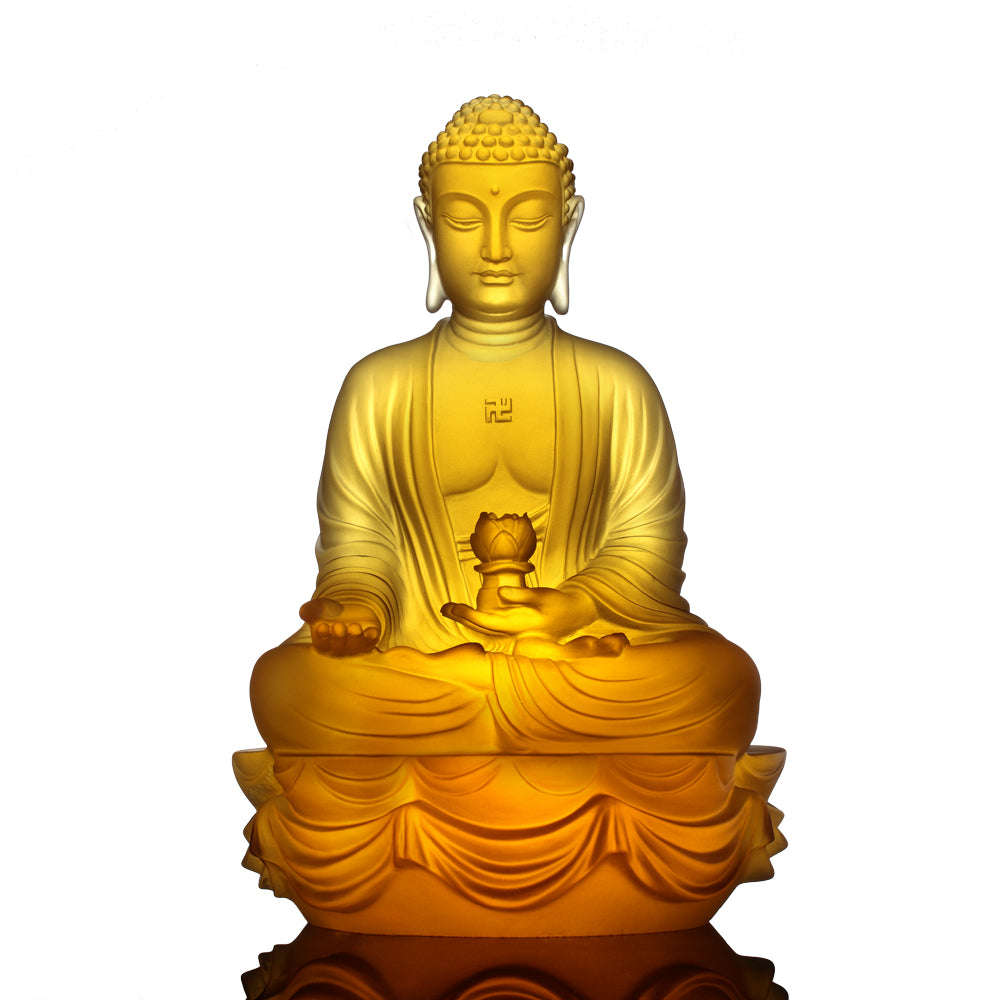
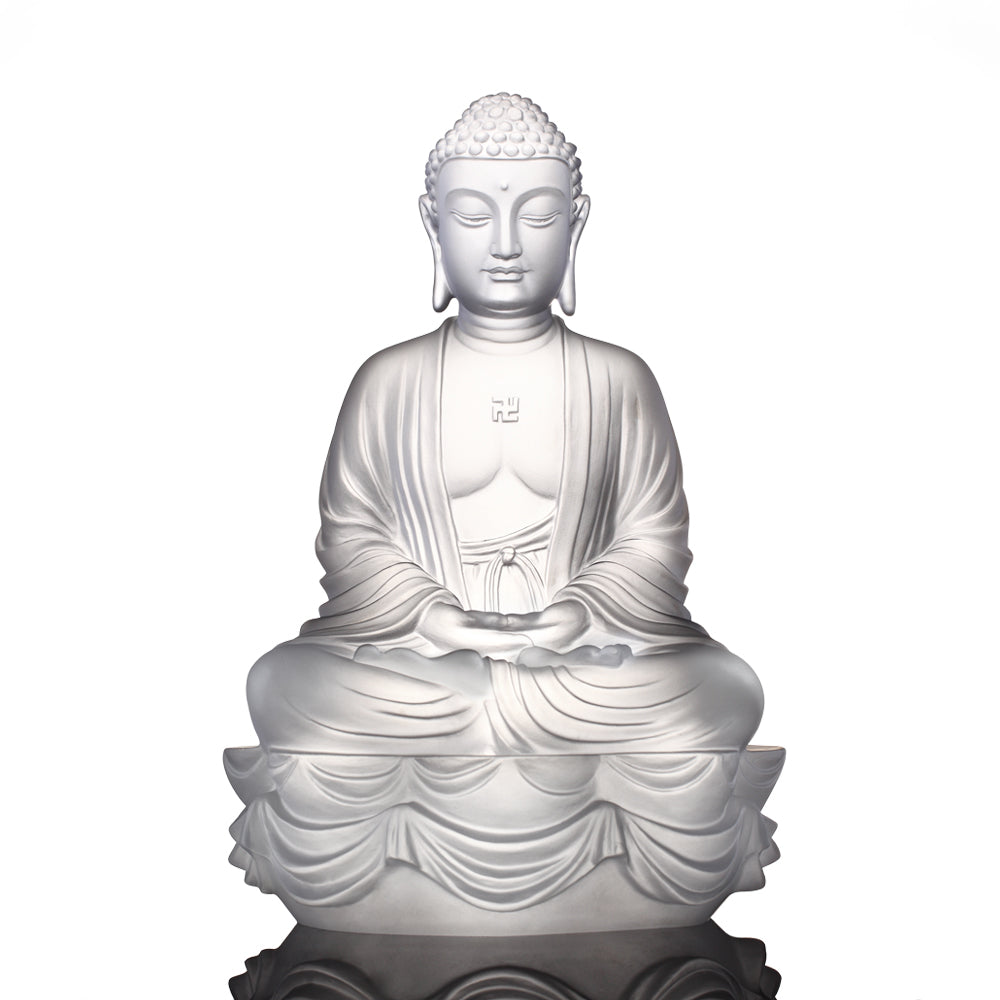
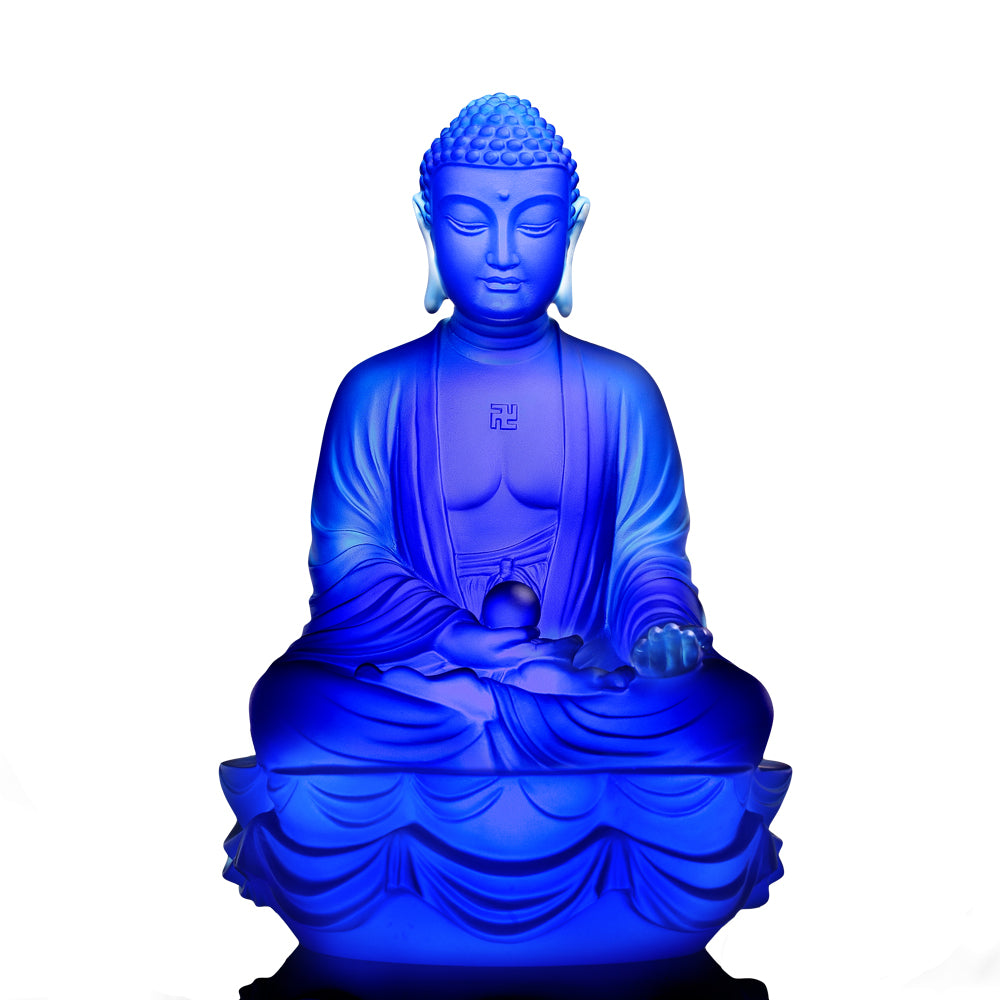
|
Design Description: "The Buddhas of the Three Worlds are widely worshipped in Mahayana Buddhism. They serve as a constant reminder to practice goodness in body, speech, and mind; to cherish the present moment and everyone we meet; and to regard everything that happens in life as a blessing, bringing joy, peace and security. These three images, each seated in the lotus posture on a lotus throne, are based on the Buddhas of the Three Worlds in the Main Hall at Foguang Shan in Taiwan. In the center is Sakyamuni, who presides over the saha (endurance) world in which we live; his hands are in the meditation gesture (mudra). The historical founder of Buddhism is Sakyamuni Buddha, a title meaning “the awakened sage of the Sakya (clan).” Said to have attained enlightenment some 2,500 years ago in northern India, he spent the remaining decades of his life propagating his teaching based on meditation, sense restraint, and wholesome action in body, speech, and mind. Paying homage to his image brings inner stillness and strengthens one’s faith in the veracity of his teaching and its transformative power. On the left is Amitabha, who presides over the Western Pure Land; he is making the wish-granting gesture with his right hand and holding a lotus stand with his right hand. Amitabha (Unlimited Light or Unlimited Life) is commonly depicted holding a lotus, representing rebirth inside a lotus in his Western Pure Land; he functions as a savior who ushers the faithful out of samsara (the endless cycle of birth and death) and into his heavenly realm characterized by optimal conditions for the attainment of enlightenment. Thus worship of Amitabha is aimed at attaining rebirth in his pure land, where final liberation is expected. On the right is the Medicine Buddha (Bhaisajyaguru), who presides over the realm Lapis Lazuli Radiance, located in the east; he is making the wish-granting gesture with his left hand and holding an auspicious gem with his right hand. While still a bodhisattva, the Medicine Buddha made twelve vows in which he dedicated himself to delivering sentient beings from all forms of suffering, before attaining buddhahood and entering his buddha realm. Thus the Medicine Buddha is widely worshipped as the bestower of health and longevity. 設計概念說明: 琉璃三寶佛,一身澄明,法相慈悲圓滿,亦稱為“三世佛”,是大乘佛教的主要崇敬對象。三寶佛是一種時刻的提醒,善心善念善行,珍惜當下,珍惜身邊的人,身邊的事是一種無限廣闊的美好祝福與祈願,吉祥喜樂,平平安安。藝術家以佛光山「大雄寶殿」三寶佛法相為本,恭敬製作以琉璃為材質的三寶佛。所謂的三寶佛:中間是釋迦牟尼佛,双手作禪定印。左邊是阿彌陀佛,左手作接引印,右手持蓮花台。右邊是藥師佛,手作接引印,另一手持摩尼珠,祈願人人平安、吉祥處處 (右) 藥師佛,又稱為藥師琉璃光如來,大醫王佛。造型中的藥師佛,被安置於釋迦牟尼佛的左邊,結跏趺坐於蓮臺上,右手執持藥器(又作無價珠)。藥師佛於過去世行菩薩道時,曾發十二大願,願為眾生解除疾苦,後願滿成佛,住淨琉璃世界。“藥師琉璃光如來”的名號來源,是以能拔除生死之病而名為藥師,能照度三有之黑暗故名琉璃光。藥師佛不僅醫治眾生身體上的病痛,也醫治智慧和不圓滿的心靈。供養禮拜藥師佛,以求健康長壽 (中) 釋迦牟尼佛,是佛教開啟者。西方阿彌陀佛、東方藥師佛、十方三世一切諸佛,都是釋迦牟尼佛說出來的。釋迦牟尼,意為釋迦族出身之聖人。意思是“能仁”、“能儒”、“能忍”、“能寂”、“能滿”等,又稱釋迦牟尼世尊。 釋迦牟尼佛,引導人們身常行慈、口常行慈、意常行慈。以無量的善巧和方便說 法,令眾生入佛知見,引導現世之人到達西方極樂世界。人們拜釋迦牟尼佛,以 求保佑平安 (左) 阿彌陀佛,意譯為無量光佛、無量壽佛。別名甘露王或甘露王如來。造型中的阿彌陀佛,被安置於釋迦牟尼佛的右邊,結跏趺坐於蓮臺上,掌中托著一座蓮台,表示接引眾生往生西方極樂淨土,在蓮花中化生之意。佛教認為,阿彌陀佛主要是以其願力,引渡眾生到極樂世界,脫離苦難的輪回,故亦號“接引佛”。祈禱阿彌陀佛,以求長壽及生命的自在解脫。 " |
|||
|
|||

